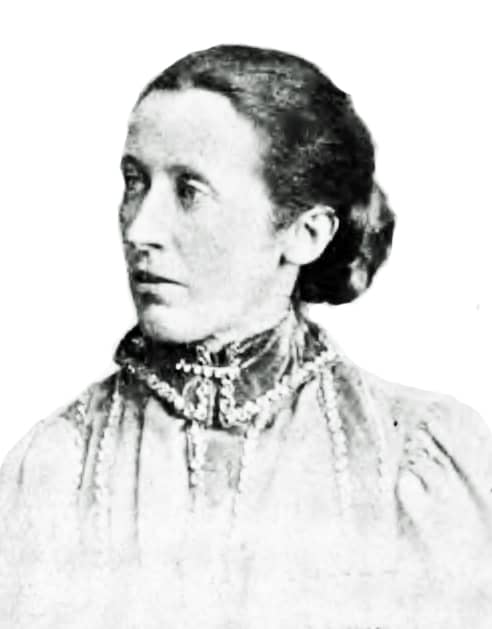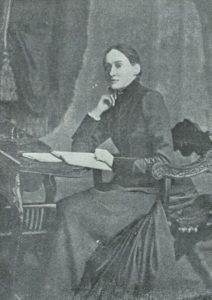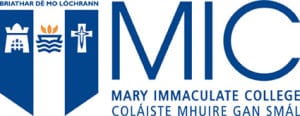Chambers’s Journal and Irish Women Writers at the Fin de Siècle: The Case of Magdalen Rock
Alexis Easley, University of St. Thomas
From its founding in 1832, Chambers’s Edinburgh Journal strove to reach a national audience. This meant employing a corps of writers who could speak to both national and regional concerns. As David Masson noted in 1851, the Chambers brothers employed ‘Englishmen and Englishwomen, Irishmen and Irishwomen, as well as countrymen and countrywomen of their own, writers of the highest celebrity as well as aspirants whom they have helped to encourage’ (186). As I have shown elsewhere, this list of ‘aspirants’ included a large number of women writers between 1839 and 1855. The firm’s ledgers from this period reveal the identities of 136 women who contributed some 1,048 essays, stories, and poems to the journal. A disproportionately large number of these women – about 21% – were Irish.

In this essay, I examine a later period of the journal’s history – 1880 to 1901 – in order to assess its role in promoting Irish women’s writing at the fin de siècle. I focus specifically on poetry, which was an important genre for Irish women writers eager to establish a foothold in the literary marketplace. I will begin by sharing insights from the Chambers’s Archive that provide a distant view of women’s poetry contributions to the journal. I then focus on a particular poet, Magdalen Rock (Ellen Beck, 1858–1924), who published thirty-two poems in Chambers’s Journal between 1891 and 1897. At the same time that she was making a name for herself as a national poet by publishing signed verse in Chambers’s, she pursued a parallel career as an Irish Catholic writer whose religious verse, essays, and fiction regularly appeared in Irish anthologies, books, magazines, and newspapers. Her case study reveals how Irish women writers capitalized on regional and sectarian networks while at the same time publishing their work in mainstream journals that reached a much broader range of readers.
Chambers’s Journal is a fruitful source for investigating the history of nineteenth-century women’s writing. Even though most of women’s contributions were published anonymously, the journal’s ledgers held in the Chambers’s Archive at the National Library of Scotland identify their names, addresses, and contributions. The Digital Victorian Periodical Poetry database, edited by Alison Chapman at the University of Victoria, incorporates data from the Chambers’s Archive in a searchable format. Using this database, I compiled a spreadsheet listing the names, poem titles, dates of publication, and regional affiliations of all women who contributed poetry to Chambers’s Journal between 1880 and 1901. I discovered that of the 1,128 poems published in the journal during this time period, 438 (39%) were written by women. Of the 133 women poets who produced this body of work, 18 (14%) were Irish. This included poets from Irish families living in England, such as Fanny Forrester, who published twenty-eight poems in Chambers’s Journal between 1882 and 1889. Other Irish writers who published verse prolifically in the journal during this time period include Marie Hedderwick Browne, Mary Gorges, and Nannie Power O’Donoghue.
Magdalen Rock and Chambers’s Edinburgh Journal

One of the most significant contributors of poetry to Chambers’s Journal in the 1890s was Ellen Beck (1858-1901), a schoolteacher who signed her work with the pseudonym ‘Magdalen Rock’ after her hometown Rock, near Dungannon in the north of Ireland. Unlike many other women writers who were forced to relocate to Edinburgh or London in order to find sufficient literary work to make a living (Loeber), Beck was able to use her stable but meager teacher’s salary as a foundation on which to build a literary career at home. Indeed, she claimed to have left County Tyrone on only ‘two occasions’ in her life (qtd. in ‘Living Catholic Authors’ 855). One of these occasions may have been a visit to the Dublin offices of the Rev. Matthew Russell, editor of the Irish Monthly, an influential magazine associated with the Irish Literary Revival. Russell was well-known for promoting Irish women writers — not only Magdalen Rock but also Katharine Tynan, Rosa Mulholland, Frances Wynne, and Dora Sigerson (O’Keefe; Tynan).
In April 1890, when Magdalen Rock was thirty-two, she published her first poem in the Irish Monthly titled ‘A Californian Rose’. She went on to publish some ninety poems in the magazine between 1890 and 1921. Drawing on her local experience, she often contributed seasonal and devotional verse. She also published poems exploring Irish themes. ‘The Irish Saints’, for example, praises those ‘saints of Erin’s Isle’, whose ‘relics’ and ‘lore’ imbue the land with meaning (79). Given Rock’s focus on Irish Catholic themes and her circumscribed life in a small village, it is interesting that she often evoked the experiences of Irish immigrants in her poetry. This approach coincided with the growth of the Irish diaspora, both in Great Britain and abroad. ‘A Californian Rose’, for example, describes a miner’s nostalgia for his mother’s cottage and ‘rose-tree’ (198).
Another poem, ‘Dead – in New York’, has a more sober theme, recounting the tale of a young woman who died abroad working to support her mother in ‘Inishowen’ (426). Even if Rock had little experience of travel, her poems circulated well beyond Ireland’s shores. Her poems from the Irish Monthly and other Irish periodicals were reprinted in newspapers across the globe. For example, her emigration poem titled ‘The Australian Letter’ appeared in the Wicklow People on 7 February 1891 and was reprinted under a slightly altered title, ‘An Australian Letter’, in the Melbourne Advocate (AUS) on 19 December 1891. The global circulation of Rock’s work was not only enabled by international practices of reprinting but also by a global Catholic press, which frequently published and reprinted her verse. For example, at the fin de siècle her work appeared in the Catholic World (New York), the Catholic Press (Sydney), and Publications of the Catholic Truth Society (London).
Throughout her career, Rock primarily published her work in Irish Catholic periodicals, newspapers, and anthologies. However, in 1891 she deviated from this practice by submitting her work to Chambers’s Journal. Her first poem, ‘A Gossip,’ appeared in January 1891, and thirty-one of her other poems appeared in the journal over the next six years. Chambers’s Journal was well known in Ireland and must have seemed like a useful vehicle for reaching a broad audience. Indeed, in 1882, William Chambers boasted in an editorial that his journal was ‘perhaps as well known in the United States and in the colonies as at our own doors’ (53). The contents of Chambers’s Journal were regularly referenced and recommended in the Irish press. In 1847, the Dublin Evening Packet called it ‘the best written and most admirably conducted weekly publication in existence’ (‘What’ 3). This may explain why Rock and other regular contributors to the Irish Monthly – Louisa Addey, Alice Furlong, and Mary Geoghegan – also chose to send their verse to Chambers’s Journal. Because Chambers’s circulated internationally, it was a useful vehicle for women poets like Magdalen Rock to develop name recognition.
Once published in Chambers’s, a poem might be reprinted several times abroad as well as in local Irish newspapers. For example, her poem ‘Lovers Still’ first appeared in Chambers’s Journal on 1 September 1894 and was reprinted the following month in the Bridport News (5 October), the New York Times (7 October), the Toronto Daily Mail (11 October), and the Coventry Herald (12 October). Eventually, the poem found its way back to Ireland when it was reprinted in the Cork Examiner on 5 September 1896. Curiously, it also appeared in three American trade magazines, the National Stockman and Farmer (6 December 1894), the Railroad Trainman (December 1895), and the Locomotive Engineers’ Monthly (January 1896). The poem’s sentimental subject matter – the enduring love between an elderly couple who have persevered through ‘weal and woe’ and now ‘hand in hand … pass / Serenely down life’s hill’ – no doubt made it a popular choice for reprinting (560). While the Irish and Catholic Press had provided Rock with the opportunity to speak to an Irish Catholic diaspora, publishing in Chambers’s provided her with opportunities for her work to circulate even more broadly, sometimes reaching unintended niche audiences like trainmen and farmers in America.
When I first discovered Magdalen Rock’s name in the Chambers’s Archive, I assumed she was a writer with limited scope and influence. After all, during her lifetime, she published only two books, The Mystery of Geoffrey Melcombe’s Death (1895) and Nellie’s Lover and Other Stories (1896). However, once I began researching her periodical publishing networks – local, national, and international – I realized that she was an immensely prolific writer whose work resonated powerfully with a wide range of readers, particularly those associated with a growing Irish diaspora. When I stopped tabulating periodical publications and reprintings of her work, my spreadsheet already listed over 200 entries, and I had just scratched the surface. More research is needed to assess the broad reach of her work – and the work of many other Irish women writers of the fin de siècle whose writing primarily appeared in newspapers and periodicals. Chambers’s Journal was clearly an important node within these networks: a vehicle of publication which, due to its reputation and reach, was a desirable site of publication. That the Chambers’s contributors’ list overlapped with – and indirectly promoted – a distinctly Irish popular press makes it an ideal source for exploring concentric networks available to women writers. Like many of us during the current pandemic, Magdalen Rock wrote from home, yet she expanded her circles of influence virtually through an intricate web of local, national, and international networks.
Alexis Easley is Professor of English at the University of St. Thomas in St. Paul, Minnesota. She is the author of First-Person Anonymous: Women Writers and Victorian Print Media, 1830–70 (Ashgate, 2004) and Literary Celebrity, Gender, and Victorian Authorship, 1850–1914 (Delaware UP, 2011). She co-edited The Routledge Handbook to Nineteenth-Century Periodicals and Newspapers and Researching the Nineteenth-Century Periodical Press: Case Studies (Routledge, 2016 & 2017, both recipients of the Colby Prize), with Andrew King and John Morton. Her third essay collection, Women, Periodicals, and Print Culture in Britain, 1830s–1900s, co-edited with Clare Gill and Beth Rodgers, was published by Edinburgh University Press in 2019. Her most recent book publication is titled new Media and the Rise of the Popular Woman Author, 1832-60 (Edinburgh University Press, 2021). This project was a 2019 recipient of the Linda H. Peterson Prize awarded by the Research Society for Victorian Periodicals.
Would you like to submit a blogpost? Check out our guidelines here or email Dr Deirdre Flynn.
Works Cited
‘Authentic Sketches of Living Catholic Writers.’ Catholic World, vol. 65, September 1897, pp. 852–5.
[Chambers, William]. ‘Our Jubilee Year.’ Chambers’s Journal, vol. 19, 28 January 1882, pp. 49–59.
Chapman, Alison, ed. Digital Victorian Periodical Poetry. University of Victoria, 2020, https://dvpp.uvic.ca/about.html.
Easley, Alexis. New Media and the Rise of the Popular Woman Writer, 1832–60. Edinburgh UP, 2021.
Loeber, Rolf, and Magda Stouthamer-Loeber. ‘Literary Absentees: Irish Women Authors in Nineteenth-Century England.’ A Guide to Irish Fiction, 1650–1900, eds. Rolf Loeber and Magda Stouthamer-Loeber, with Anne Mullin Burnham, Four Courts Press, 2006, pp. 167–86.
[Masson, David]. ‘William and Robert Chambers.’ Dublin University Magazine, vol. 37, February 1851, pp. 177–90.
O’Keefe, Declan. ‘A Beacon in the Twilight: Matthew Russell, S.J. and the Irish Monthly.’ Studies, vol. 99, Summer 2010, pp. 169–79.
Rock, Magdalen [Ellen Beck]. ‘The Californian Rose.’ Irish Monthly, vol. 18, April 1890, pp. 198–9.
———. ‘Dead – in New York.’ Irish Monthly, vol. 18, August 1890, p. 426.
———. ‘The Irish Saints.’ Irish Monthly, vol. 41, February 1913, p. 79.
———. ‘Lovers Still.’ Chambers’s Journal, 1 September 1894, p. 560.
Tynan, Katharine. ‘Father Matthew Russell, S.J.: Dearest of Friends.’ Irish Monthly, vol. 40, October 1912, pp. 551–8.
‘What Has the Legislative Union Done for Ireland?’ Dublin Evening Packet, 4 February 1847, p. 3.



